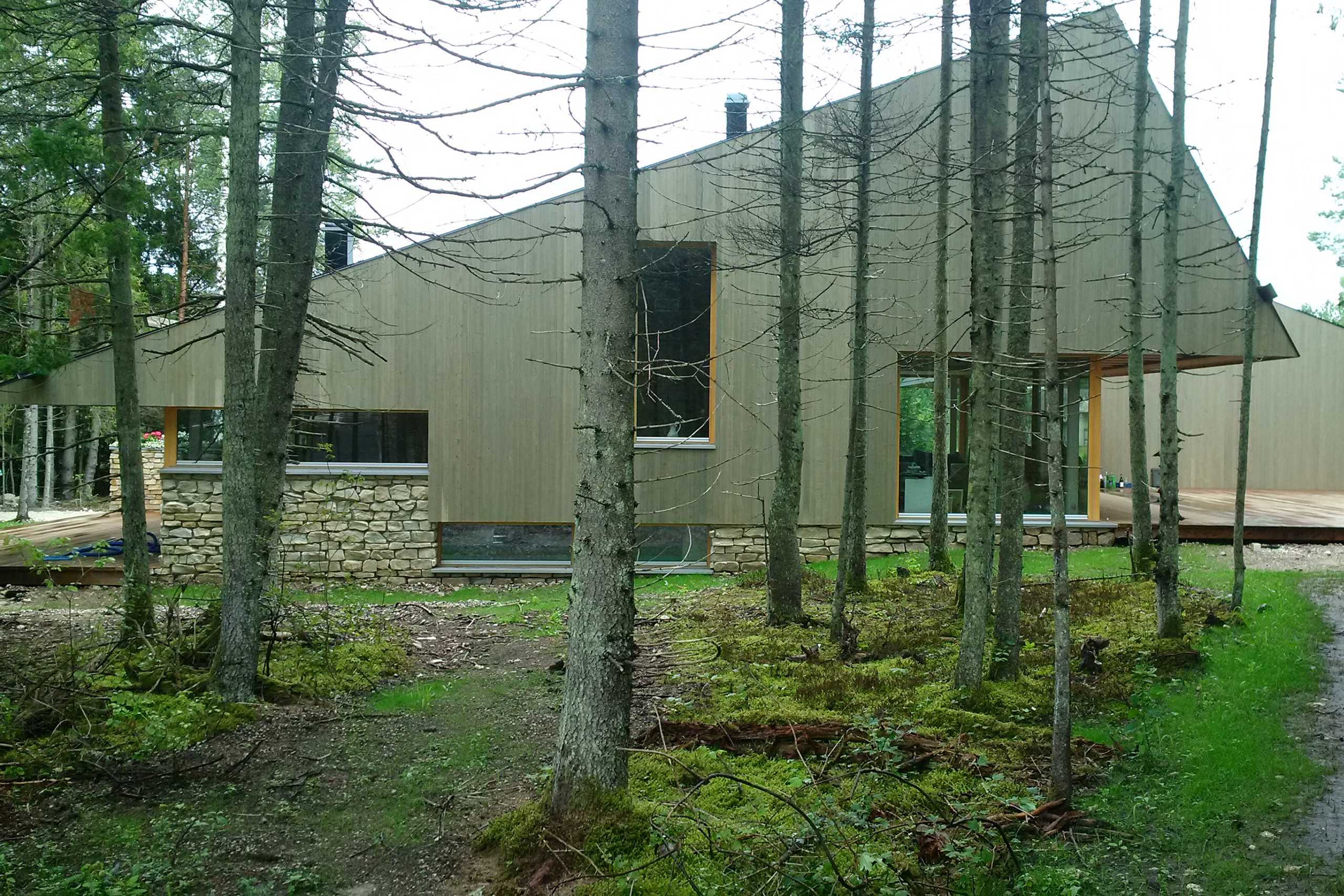
Oluliseimaks lähtepunktiks hoonete arhitektuuris oli hoonete sulandamine rikkalikku ja puutumata looduskeskkonda, tihedasse kuusikusse, kus hooned paiknevad. Raudvitrioliga kaetud kuusk-fassaadilaudis on peaaegu identne oma toonilt kuusemetsa tüvede tooniga. Looduskivifassadi osa suhestub sõbralikult metsaaluse korrastamata maastikuga. Tõrvatud puitsindel katus kummardab ümbruskonna hoonestuse traditsioonidele.
Ka hoonete arhitektuur ise on suures plaanis traditsionaalne, kuid tugevate moodsate nüanssidega. Paljandatud ja eksponeeritud on massiivsed liimpuit talad ning sarikad. Hoonemahtude morfoloogia on terava ja julge iseloomuga. Moodsat ruumikogemust lisavad võimendatult pikad konsoolsed räästaste alused. Hooned on kui kuused, millede räästad on kui laiad kuuseoksad, millede alla saab varjule minna, moodustades enda alla ruumi. Hooned järgivad maastiku kõrguste erinevusi, kasutades neid ära. Saunahoone on eritasandilise siseruumiga, kaasates kõrguste rütmikasse ka suure basseini. Ka paadikuur lõikab praktilist kasu kõrguste erinevusest – nihkes vahekorrus tekitab enda alla välja kaetud varjualuse ning siseruumi avara töö- ja puhketoa.
Hoone kandekonstruktsioonis on kasutatud ohtralt liimpuitu, nii katusetalastikes, kui kandepostidena. Need konstruktsioonid on ka eksponeeritud nii see kui ka väljas. Kiviladu on vaid kasutatud küljeseintes ja osaliselt vaheseintes jäikuse eesmärgil, kuna katuste pinnad on väga suured. Puitu on suurtes pindades ka välisfassaadides. Kõik katused on üleni puitsindel, mis on tõrvatud. Siseruumides on seina ja lae viimistluseks kasutatud samuti suuremas osas vaid puitu, heledaks peitsituna.
The most important starting point in the architecture of buildings was the fusion of buildings into the rich and untouched natural environment, into the dense spruce where the buildings are located. The spruce facade board covered with iron vitriol is almost identical in tone to the tone of spruce forest trunks.
The part of the natural stone facade has a friendly relationship with the unorganized landscape under the forest. The tarred wooden roof worships the building traditions of the area.
The architecture of the buildings themselves is also largely traditional, but with strong modern nuances. Massive glulam beams and rafters have been exposed and exhibited. The morphology of building volumes is sharp and bold. Enhanced long cantilevered eaves bases add to the modern space experience. The buildings are like spruces, the eaves of which are like wide spruce branches, under which you can take shelter, forming a space underneath.
Buildings follow the differences in landscape heights by taking advantage of them. The sauna building has a different level of interior space, including a large pool in the rhythm of the heights. Also a boat shed
reaps the practical benefits of the difference in height – the offset spacing creates a field under itself
a covered shelter and a spacious interior and study room.
The load-bearing structure of the building uses a lot of glulam, both in the roof girders and as load-bearing posts. These constructions are also exhibited both inside and outside.
The stone warehouse has only been used in side walls and partly in partitions for rigidity, as the roof surfaces are very large. There are also large areas of wood on the external facades. All roofs
is entirely wooden shingles that are tarred. Indoors, for the most part, only wood, lightly stained, has been used to finish the wall and ceiling.
Risto Parve, Kai Süda, Erkki Annama
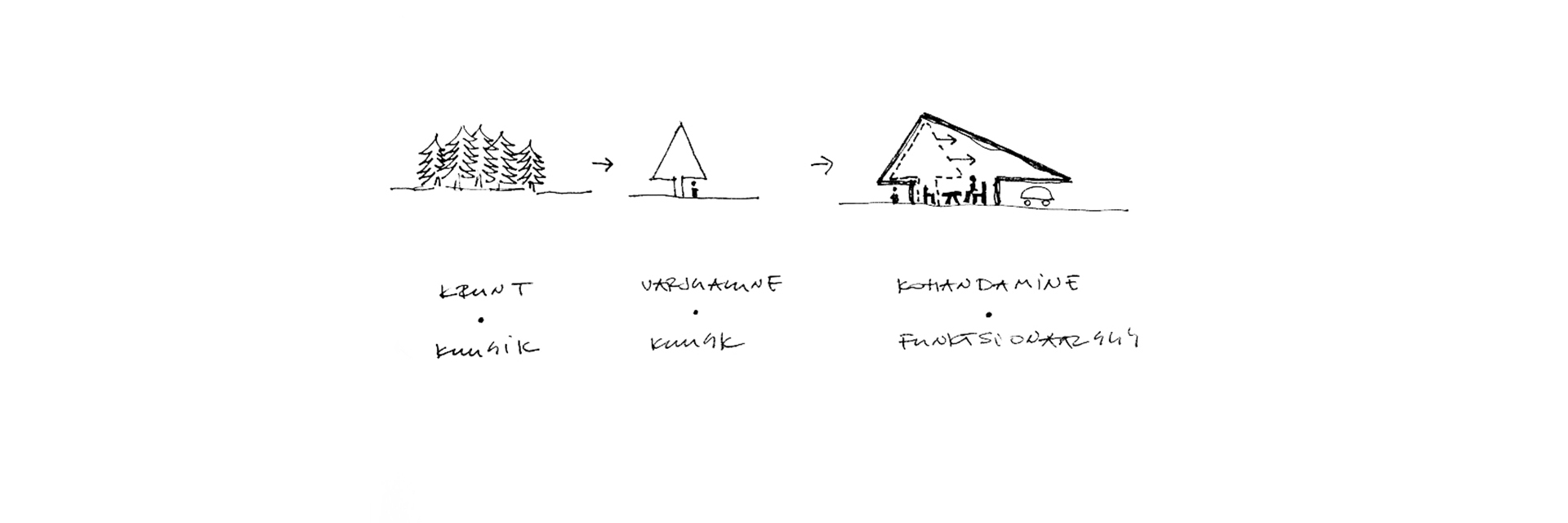
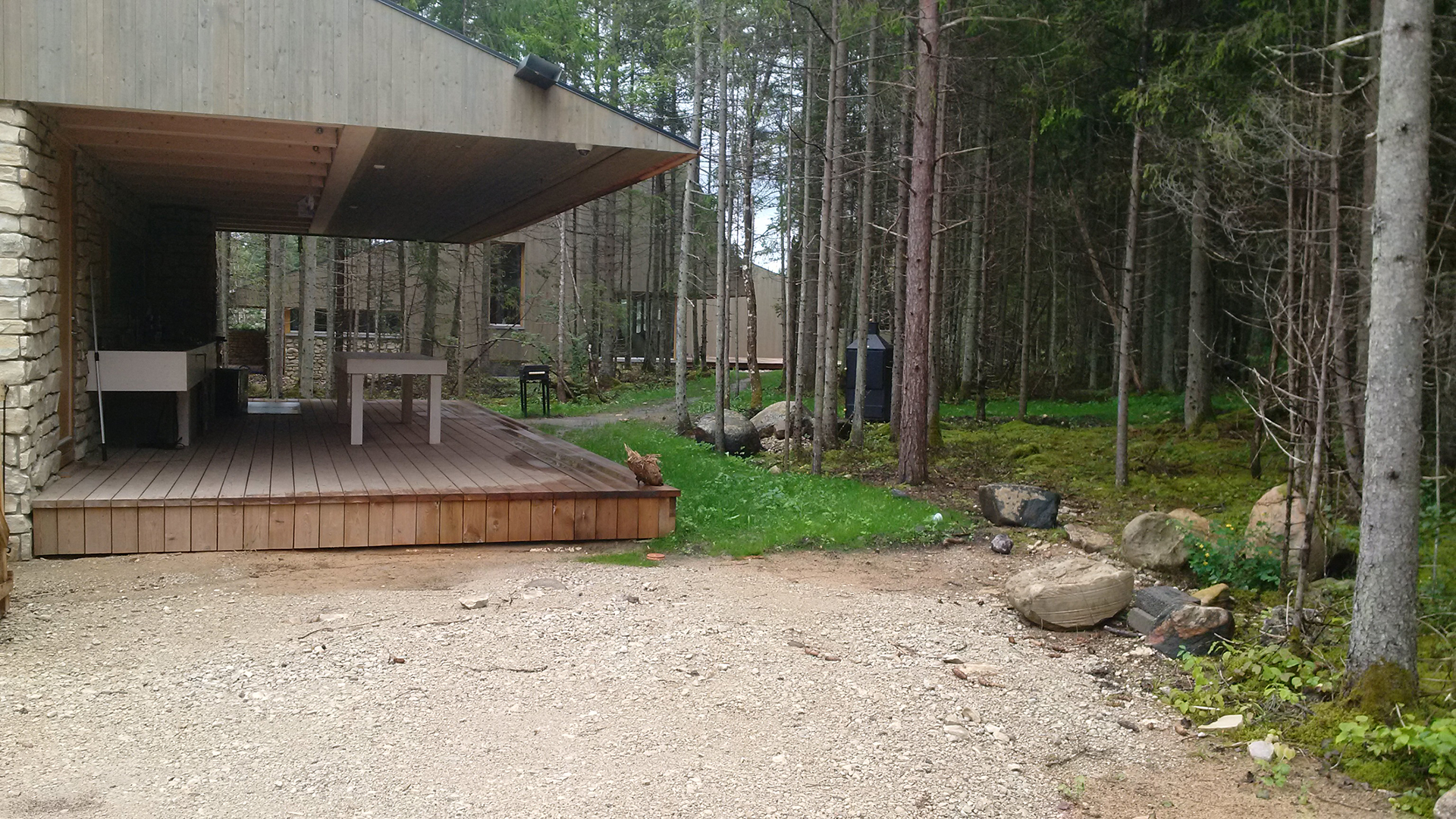
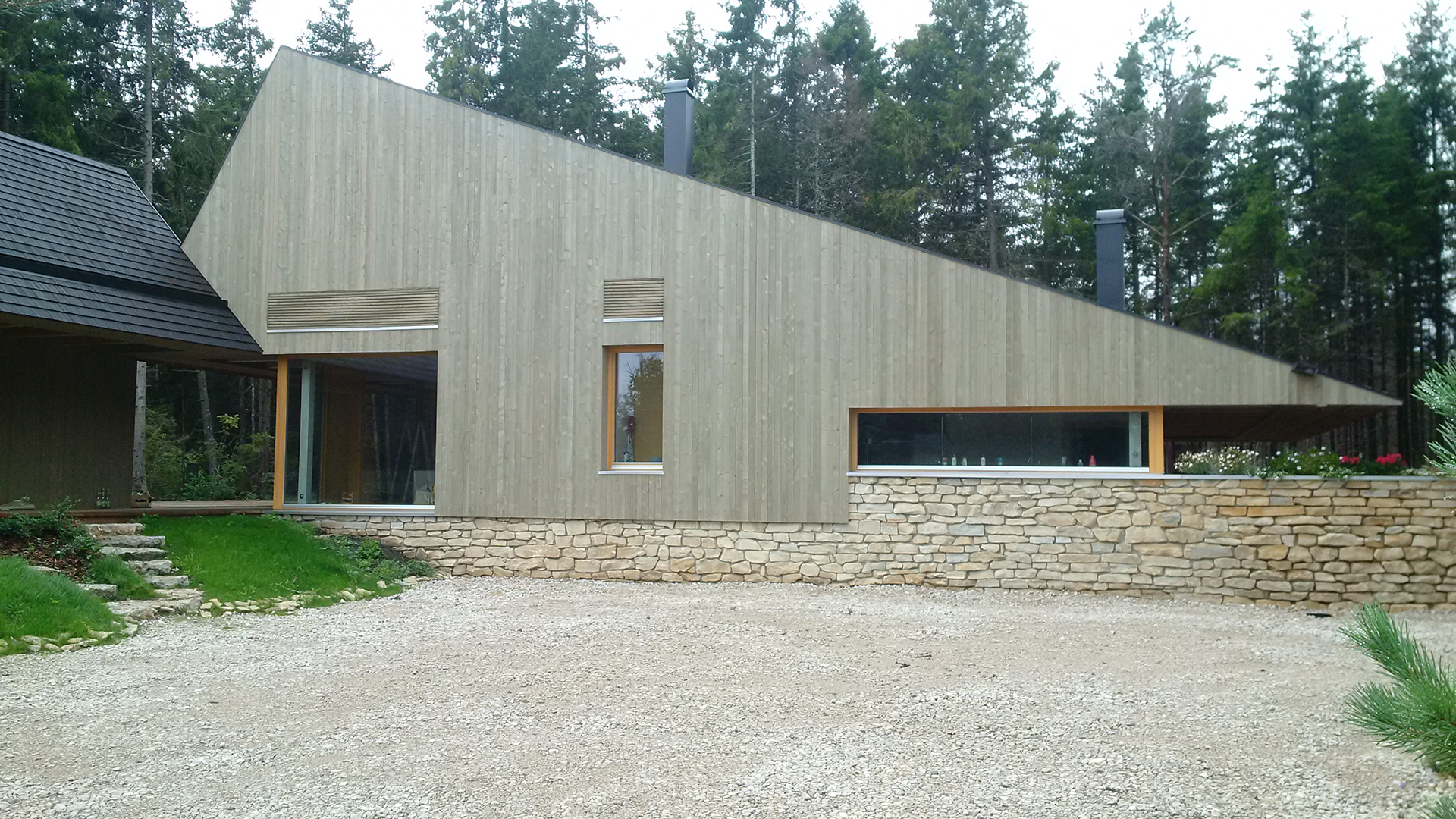
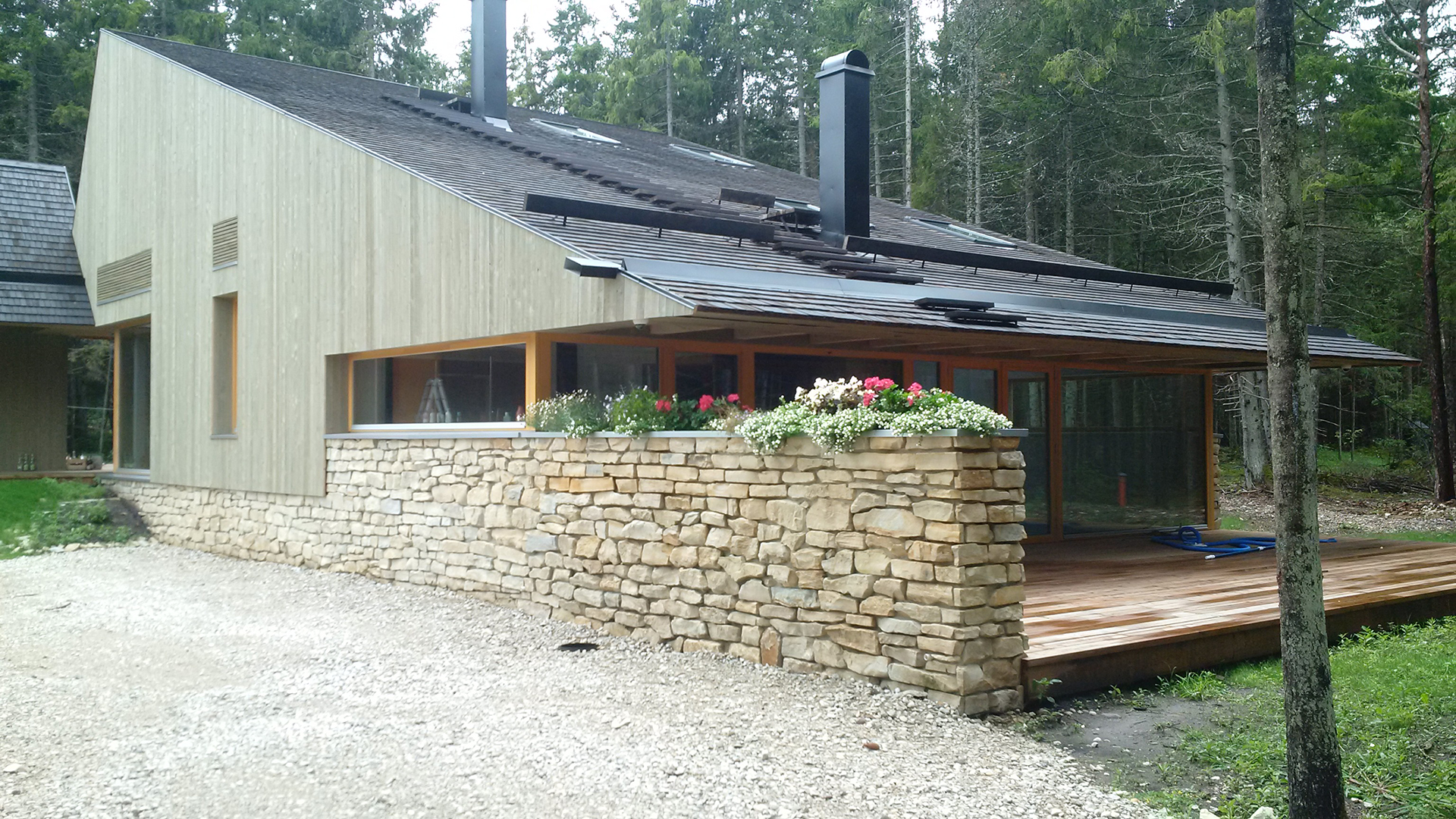
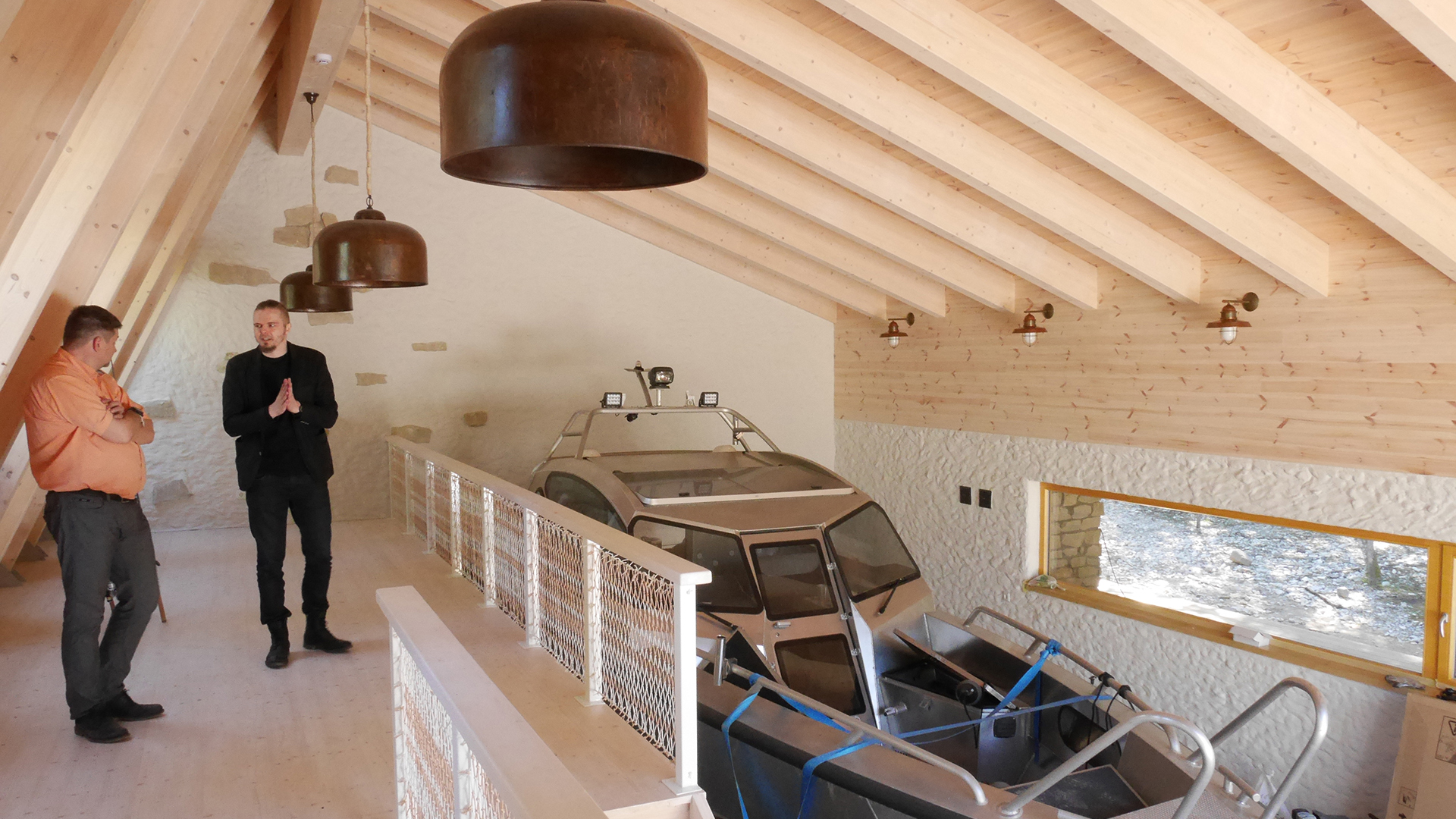
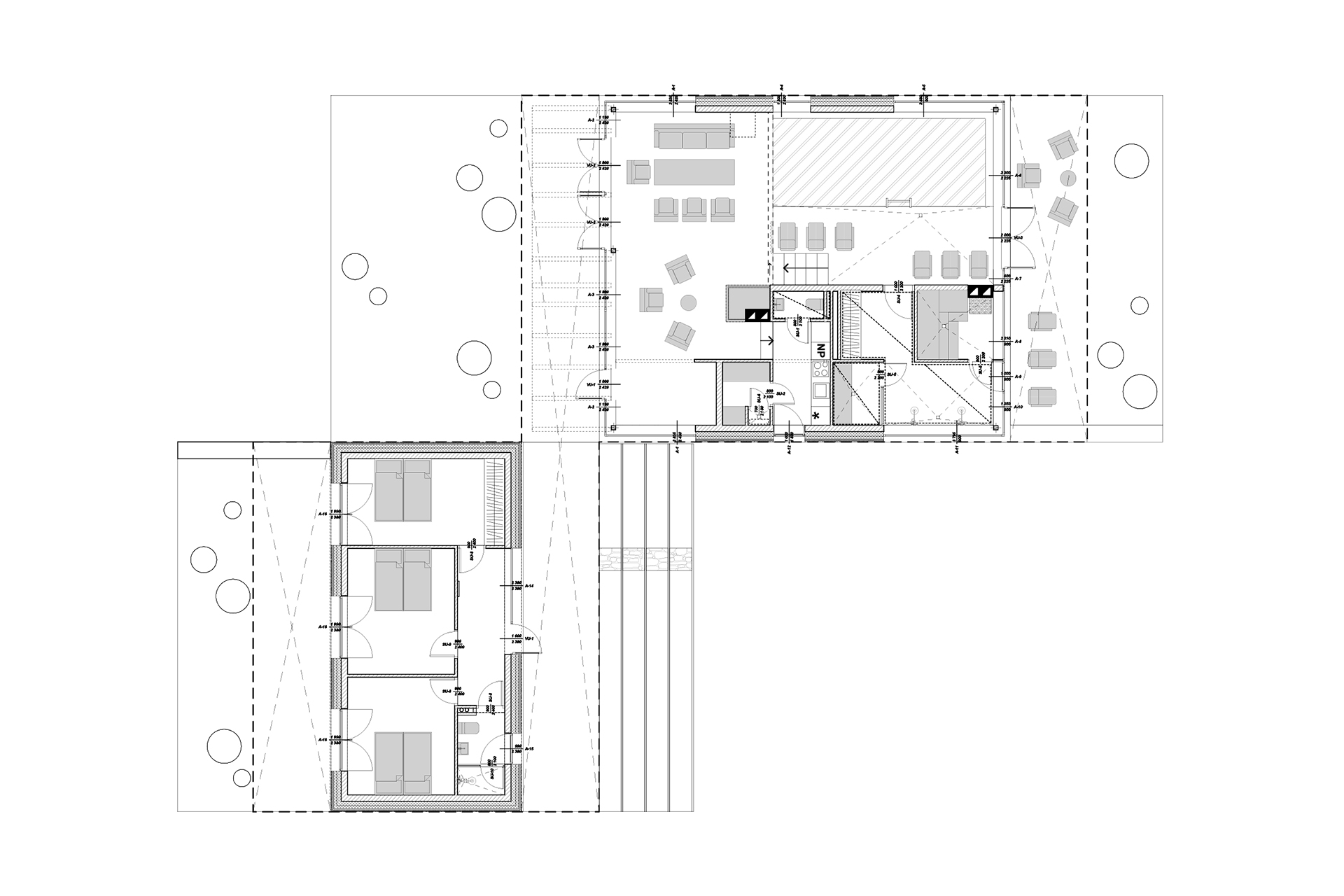 Saun-majutushoone / Sauna-hotel
Saun-majutushoone / Sauna-hotel
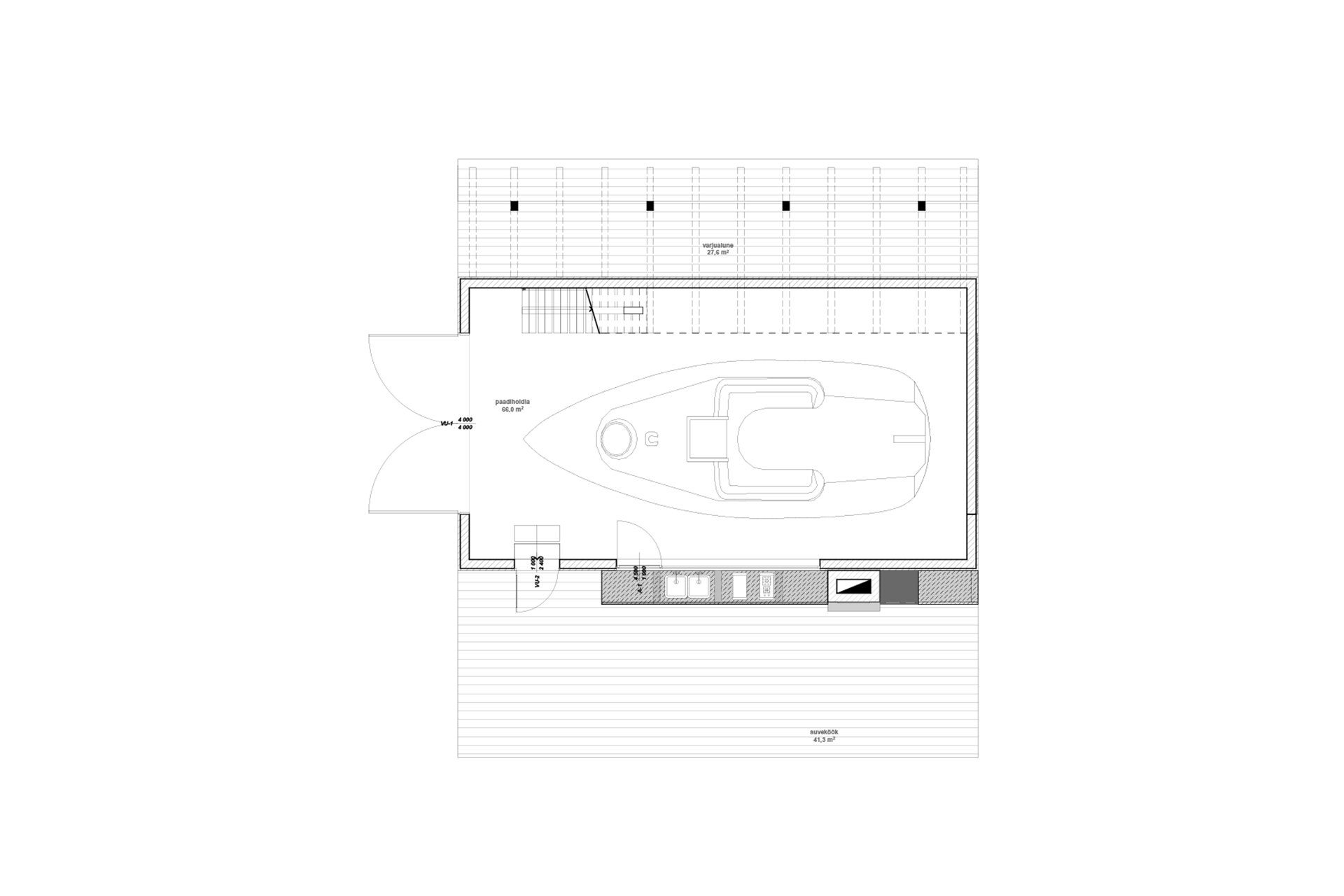 Paadikuur / Boathouse
Paadikuur / Boathouse

